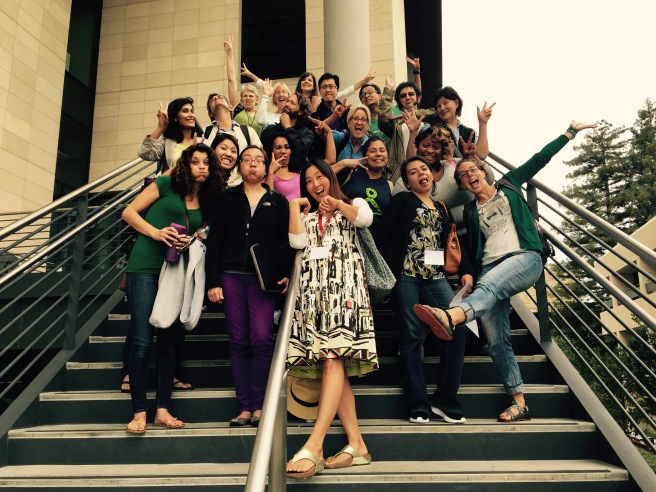When I arrived in the Dominican Republic everyone I met was so positive about the country, they all said I’d fall in love with the place and never want to leave.
After being there for a short time the cynic in me believes that people only stay in the country because they are paid so poorly in an expensive country and they simply can’t afford the flight out. Moving to Santo Domingo to teach English at Academia Europea was possibly one of the most uninformed, unexplained, and therefore became one of the worst, decisions of my life.
The Positives…
Teaching Methodology
The teaching methodology used by Academia Europea was effective. The key components to the teaching methodology were that lessons were full immersion (in reality I didn’t use full immersion, but close since I speak only very limited Spanish, I still feel that a combination is occasionally necessary), made use of repetition, were fun and interactive.
They use a system referred to as IALS: InterActive Learning System.
All lessons use the following structure:
- Introduction to the topic or grammar point through conversation
- Repetition – words or phrases are repeated as a class as well as individually
- Roleplay – in the basic levels verbs and verb use are acted out
- Attack – the teacher selects students at random to answer a question
- Complete Interaction – students are other students questions
- Text book lesson – in the high levels it is at this point you can refer to the grammar text and proceed with the ‘text book’ learning and exercises
- Close with an activity. It is essential that every class has a fun activity
Teaching the lower levels of English to adults was such a blast to role play and mime a scenario with myself around a verb like Eat in the future tense:
“Cat, Eat a sandwich”
“WAIT!! What are you going to eat?”
“I am going to eat a sandwich!”
Once you act it out, it can be repeated as a group. Together you make a list of things you can eat and then you as the teacher ‘attack’ students with commands and questions of a variety of things they can eat. Then you proceed to complete interaction where students command and ask other students about a variety of things they might eat. It’s hilarious!
The Students
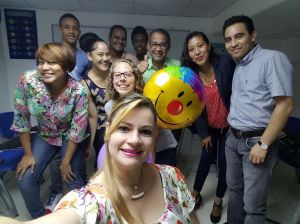 As an independent language academy the learning environment was not a part of the required schooling system. As I was typically assigned to higher level classes I was working with students who really wanted to be there.
As an independent language academy the learning environment was not a part of the required schooling system. As I was typically assigned to higher level classes I was working with students who really wanted to be there.
All my students saw the benefit of learning English for either work related or personal reasons. They loved having a native speaker as a teacher and asked me so many questions about where I came from, the lifestyle, why I came to the Dominican, what I thought of the Dominican and so on.
When I said I was leaving they were all rather upset, and made sure to give me hugs, share contact details and in some cases I received Dominican souvenir gifts to remember the country. One class of students also took me out to the local bar so I could learn how to dance Bachata, Salsa and Merengue. They found it hilarious that my body just wouldn’t move quite as fluidly as their to the caribbean beats.
The negatives…
Work conditions and false promises
I got my job in the Dominican Republic through an online advertisement for a language academy, Academia Europea in Santo Domingo. The company presents as professional, and I was quite excited by the prospect of teaching English internationally.
Prior to accepting and arriving I asked some questions regarding work visas, pay rates, amount of hours of employment, how that balances against cost of living, how to find accommodation and so on.
Work Visa
So I was told that no work visa was required, but once I was on contract it could be negotiated. I should enter on a tourist card and renew it every two months (I found out later it only has a 30 day validity, not 60).
I then discovered the company had no intention of providing a work visa, it was something I could do and pay for if I wanted to, rather I was told to simply overstay my tourist card and pay the ‘cheap’ fine on exit. The cheap fine is no longer cheap, it is 2500 pesos, which is a week’s wages for me. I was told that everyone works in this way on an overstayed tourist card, and while that may be the case it is not actually legal, and is something I am uncomfortable with.
Pay Rates
 The hourly rate of training is 180 pesos, when you pass the proficiency exam the rate goes up to 200 and some time later if you are recognised as a good teacher (I don’t know how this is assessed) it goes up to the highest pay rate of 250 pesos per hour. 200 pesos compares to €3.87 or $4.30US or $5.62AUD on today’s exchange rates, which was my pay rate for the duration of my stay and teaching.
The hourly rate of training is 180 pesos, when you pass the proficiency exam the rate goes up to 200 and some time later if you are recognised as a good teacher (I don’t know how this is assessed) it goes up to the highest pay rate of 250 pesos per hour. 200 pesos compares to €3.87 or $4.30US or $5.62AUD on today’s exchange rates, which was my pay rate for the duration of my stay and teaching.
Once I began the two week training program I double checked on the pay rates, only to be told the three hours per day, five days per week of training is unpaid. The training wage is for the classes you teach after you have completed training but before completing the proficiency exam. As an experienced teacher I was upgraded to the proficient payment level immediately when I began classroom teaching.
Oh, and there’s certainly no paid preparation or marking time, you are only paid for in class teaching time.
Hours of Employment
The academy is open seven days a week, thirteen hours a day. I was told I could make as much money as I wanted based on how many hours I wanted to work.
 As I wanted to gain as much experience as possible, and with a need for an income I set my availability to be any time, any day over the full opening hours of the academy. I was open to teach any level any time.
As I wanted to gain as much experience as possible, and with a need for an income I set my availability to be any time, any day over the full opening hours of the academy. I was open to teach any level any time.
The hours I was given were 8-9am Monday to Friday, 6-8pm Monday to Thursday and 1:30 – 4:30pm on Saturdays. When on one occasion indicated I could not make it to my Saturday class, the class was promptly and permanently reassigned to another teacher.
I averaged 2.6 hours per day, six days per week (originally 16 hours per week, which dropped to 13 hours).
A week of teaching my own classes would earn 3200 pesos (or 2600 after my Saturday class was reassigned).
A good week of teaching my own classes and relief teaching for others could earn as much as 4200 pesos.
Cost of living based on local wages
When you earn a local wage, the cost of living in Santo Domingo becomes unaffordable. If you are comfortable to rent an apartment in an unsafe ‘barrio’ then you could possibly make ends meet, but living in a safe suburb I could not.
Despite promises of assistance to find housing, none was provided. In the case of a non-Spanish speaker this poses a huge challenge!
Things that cost approximately the same as my hourly wage:
- a box of cereal
- a bottle of shampoo
- a 6″ ‘sub of the day’ sandwich at Subway
- a coffee in a cafe
- a small beer at a bar
Monthly Living Expenses
Rent 10,000 pesos
Utilities (Internet, power and water) 1050 pesos
Cell Phone 400 pesos
Drinking Water 140 pesos (tap water in the DR is toxic, all water for drinking and cooking must be purchased)
TOTAL: 11,590 pesos
Monthly Work Expenses
Grammar Textbook 1920 pesos (I chose not to buy the book but the price indicates what is required in the job. This will not be used in any further calculations)
Whiteboard Markers, Whiteboard Eraser, Pens, Pencils and Paper 700 pesos (markers dry out within a week in the DR due to the heat and humidity)
Transport 100 pesos – 210 pesos daily dependent on how many locations I worked at in any given day. For the calculations I will average at 150 pesos per day. Total of general required expenses is 3600 pesos
TOTAL: 4300 pesos
Not including food or any other basic living expenses, my monthly expenses equated to 15,890 pesos.
After being taxed on my income, I earned 10,440 pesos
My monthly loss, before eating/general basic necessities was 5,450 pesos!
The Academy’s Profits
A daily class is one hour per day, five days per week for four weeks. I was paid 200 pesos per hour, which equates to 4000 pesos per 4 weeks for that class.
A student enrolled in my daily class pays 3,990 pesos per 4 weeks.
A class needs a minimum of 5 students to run, 19,950 pesos per 4 weeks. My typical classes had at least 8 students per class, 31,920 pesos. A daily class of 8 students results in a school profit of 27,920 pesos (less academy running expenses). The director is aiming to increase class sizes to at least 10, where in my classroom we could barely fit eight into the tiny room, when the staff are so poorly paid it makes me wonder where this money goes? And whether the primary focus is education or profit?
Objectification of Women
The objectification of women is major issue in the Dominican Republic, and while I won’t go into detail it is something you need to be mentally prepared for in the event you are considering visiting the Dominican.
You can expect to be hissed at, whistled at and called out to. I’m not sure if it was a blessing or curse that I didn’t understand much of what they called out at me. I never felt particularly threatened by any of it, though it made me feel uncomfortable and annoyed.
Culturally, women are expected to have a partner and it is completely unfathomable that you would chose not to. You can expect to be asked if you are married or have a boyfriend, before someone says hello or how are you.
Safety
 Having come from Australia, a safe country, my perception of danger is certainly on a different level to those who experience it regularly in their lives.
Having come from Australia, a safe country, my perception of danger is certainly on a different level to those who experience it regularly in their lives.
The travel advice from the Australian Government lists travel to the Dominican Republic as a yellow alert: Exercise a high degree of Caution. I have been to yellow alert countries in the past, and being street smart have never had any issues or felt particularly at risk.
On the ground in Santo Domingo, everyone was telling me how common muggings are, almost everyone has been mugged, typically at gunpoint at least once, but often a few times. So fear kicks in with any normal person at this point, myself no exception. In discussion with people, I found their opinions conflicting. While it’s dangerous and terrifying, it’s going to happen, but it’s fine, it’s normal and nothing to worry about.
Numerous colleagues have been mugged exiting the bank just after cashing their pay cheque. When you work hard all month, for the pittance you receive and require in order to eat, the worst thing is to lose it all.
So honestly, being constantly afraid of being mugged is not a nice way to live your life!
Rolling with the positives..
As with any decision, good or bad, your attitude affects your experience. I certainly tried my hardest to make the most out of this bad experience.
 I appreciated the opportunity to experience teaching English at a variety of levels using an effective and fun teaching methodology. While I am aware that my English grammar and ability to explain it aren’t as good as they could be, the natural benefits I brought to a classroom by being a native speaker were highly beneficial to the students.
I appreciated the opportunity to experience teaching English at a variety of levels using an effective and fun teaching methodology. While I am aware that my English grammar and ability to explain it aren’t as good as they could be, the natural benefits I brought to a classroom by being a native speaker were highly beneficial to the students.
When time and money allowed I went on excursions to see as much of the island’s natural beauty as I could. I knew that hiding beyond the city limits were amazing things to see, and I made visits to beautiful beach areas of Punta Cana, Bahia de Las Aguilas, Puerto Plata, Isla Saona and Las Terrenas.
In addition to seeing the country itself, I met some absolutely amazing people. Some of my colleagues, students and random people I met along the way are genuinely beautiful, honest and trustworthy people who I hope to remain in contact with for years to come.
The moral of the story: do tons of research before accepting an international position; if your gut gives an indication of concern don’t do it; go to the Dominican Republic for a holiday not to work; and always try to make the most of any experience.

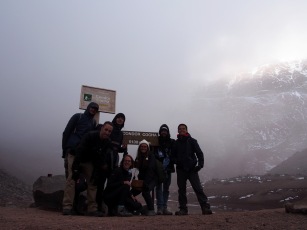
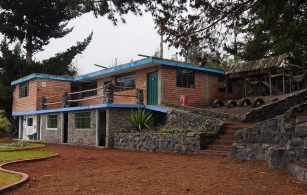 The school is a 25 minute walk, or a five minute ride on the back of a truck, up the hill from the Volunteer House and Library. The walk can be a little daunting as the dogs from local properties tend to get defensive and bark at you as you walk by; some dogs also chase you. Typically they are all bluff.
The school is a 25 minute walk, or a five minute ride on the back of a truck, up the hill from the Volunteer House and Library. The walk can be a little daunting as the dogs from local properties tend to get defensive and bark at you as you walk by; some dogs also chase you. Typically they are all bluff. The Volunteer House and Library are two joined buildings that can be found by the roadside a few kilometers from central Salasaka.
The Volunteer House and Library are two joined buildings that can be found by the roadside a few kilometers from central Salasaka.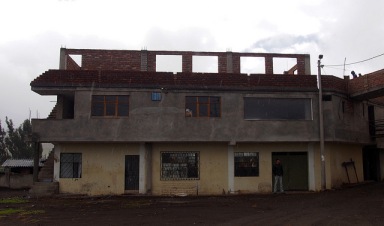 There is a communal kitchen, dining room, living room, wifi zone and bathroom. There are several dorm style bunkrooms. Most rooms have a small ensuite, though some lack doors, functioning sinks or toilets. None of the ensuites have a functioning shower. All volunteers share the bathroom above the library for access to the shower. The shower is the only place in the building where hot water can be found.
There is a communal kitchen, dining room, living room, wifi zone and bathroom. There are several dorm style bunkrooms. Most rooms have a small ensuite, though some lack doors, functioning sinks or toilets. None of the ensuites have a functioning shower. All volunteers share the bathroom above the library for access to the shower. The shower is the only place in the building where hot water can be found. 7:00 Porridge breakfast is prepared for the volunteers
7:00 Porridge breakfast is prepared for the volunteers With such poor attendance, the staff-student ratio was phenomenal. We regularly had four teachers in each classroom. On one occasion we had four teachers for one student, more often though it was closer to three students per teacher.
With such poor attendance, the staff-student ratio was phenomenal. We regularly had four teachers in each classroom. On one occasion we had four teachers for one student, more often though it was closer to three students per teacher. In regard to the language barrier, I started to wonder whether running the English classes in a bilingual manner was slowing the student learning, as opposed to if we were to run the English classes in an immersion style.
In regard to the language barrier, I started to wonder whether running the English classes in a bilingual manner was slowing the student learning, as opposed to if we were to run the English classes in an immersion style. The school has no set curriculum for the volunteers to follow. This means that class content is made up on the spot on a day-by-day basis. Whatever content is decided upon, is worked through on the small whiteboard when a working whiteboard marker can be found.
The school has no set curriculum for the volunteers to follow. This means that class content is made up on the spot on a day-by-day basis. Whatever content is decided upon, is worked through on the small whiteboard when a working whiteboard marker can be found.






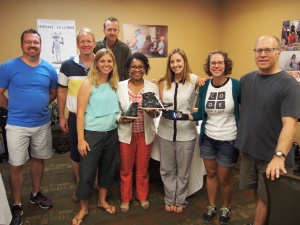

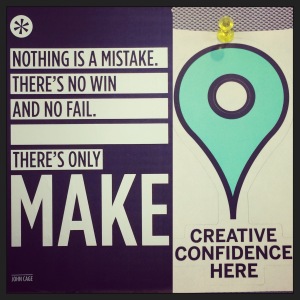
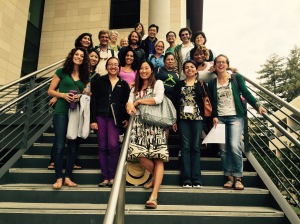 For four days in early August I attended a course at Stanford University called Transforming Teaching and Learning with Technology.
For four days in early August I attended a course at Stanford University called Transforming Teaching and Learning with Technology.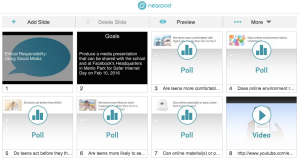

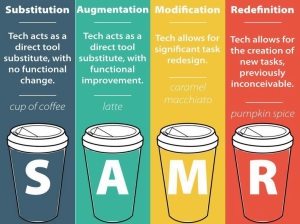 Our final project was to create a blended technology lesson plan. I worked with three others (we called ourselves the Stanford Spice Girls) to create a lesson using nearpod that presented on the topic of
Our final project was to create a blended technology lesson plan. I worked with three others (we called ourselves the Stanford Spice Girls) to create a lesson using nearpod that presented on the topic of 